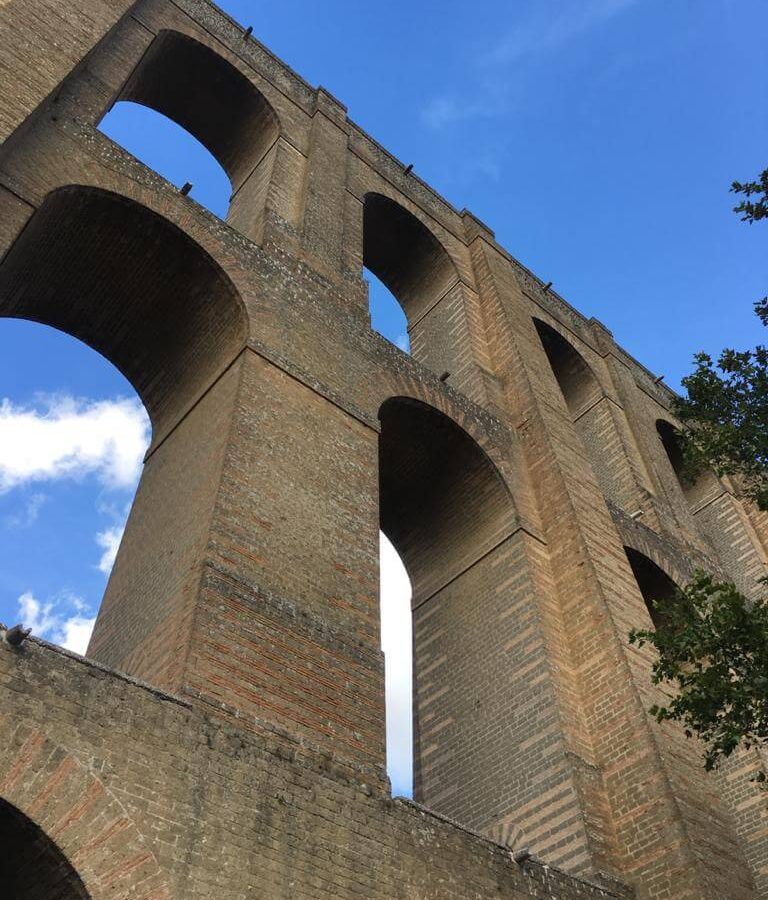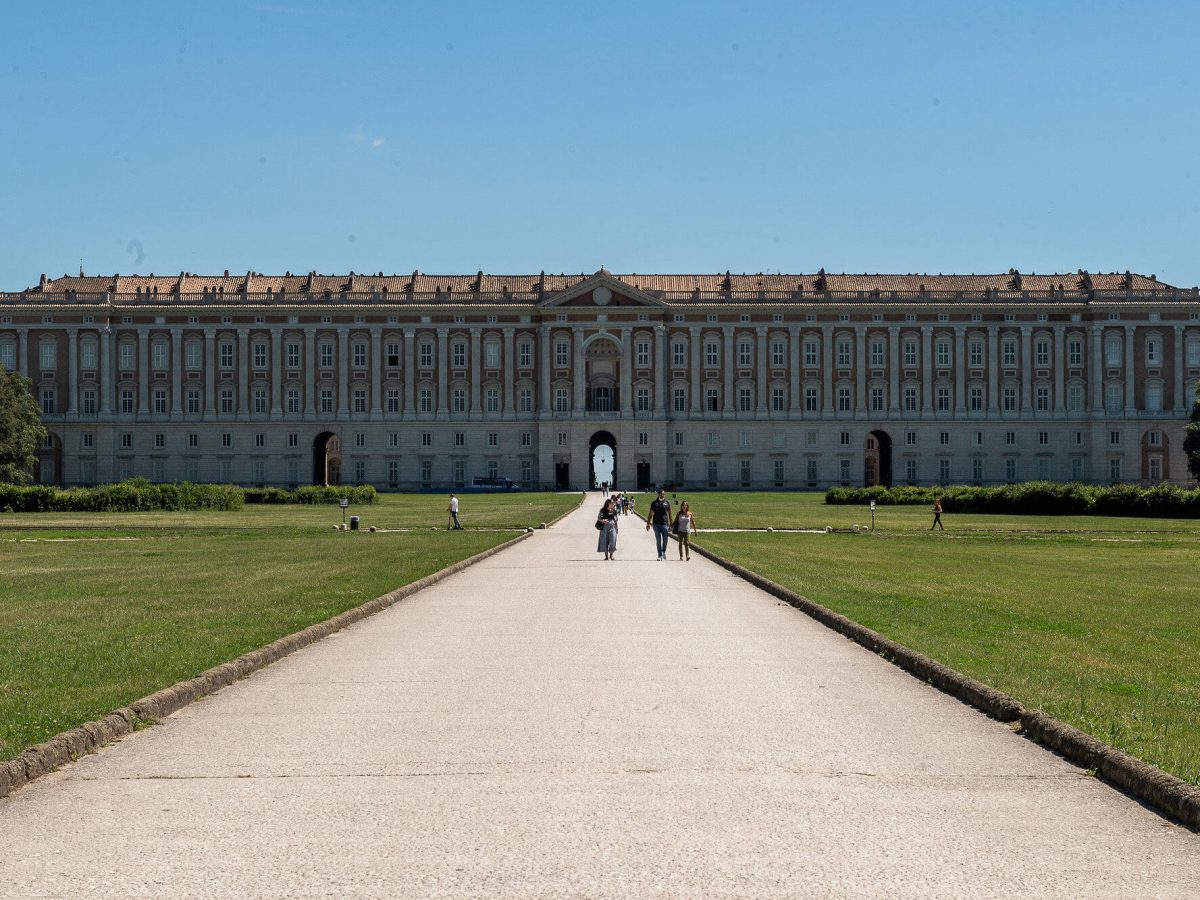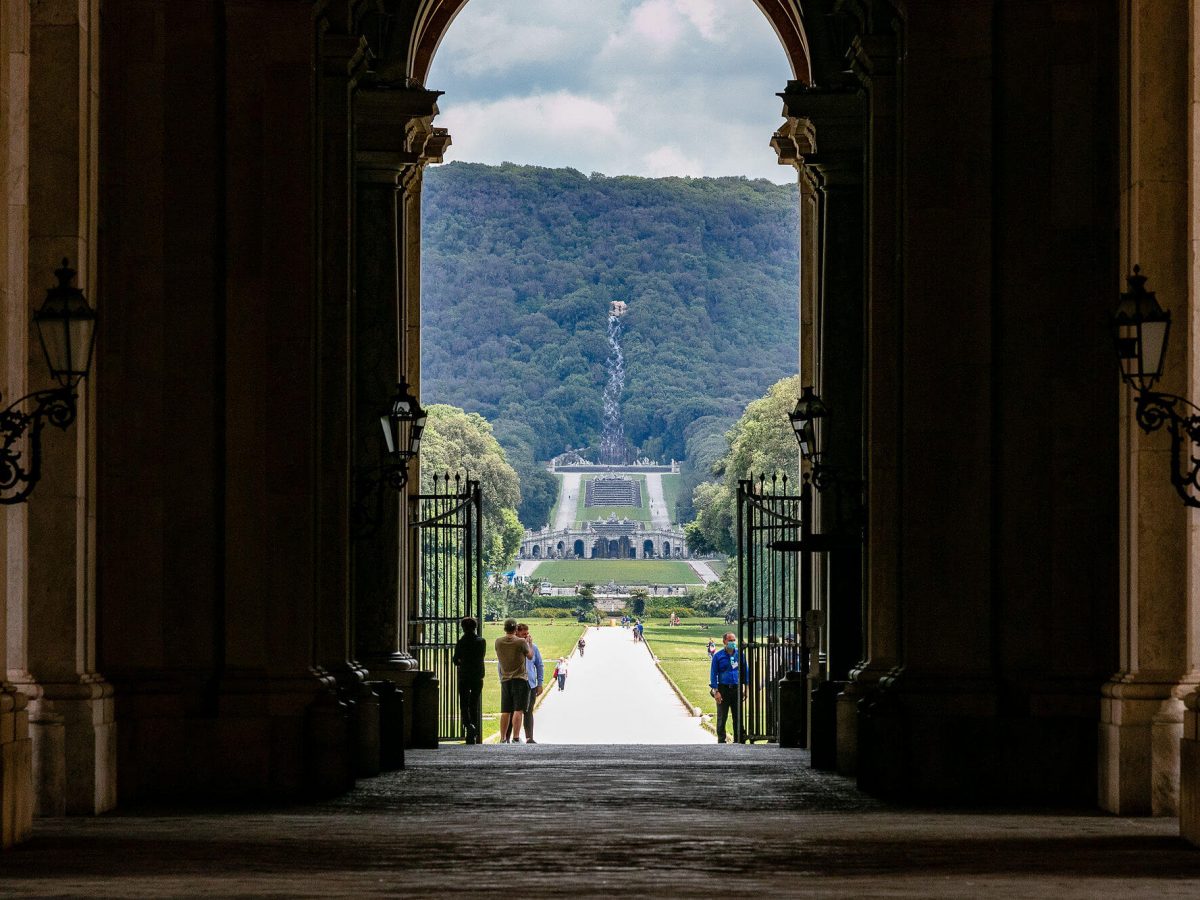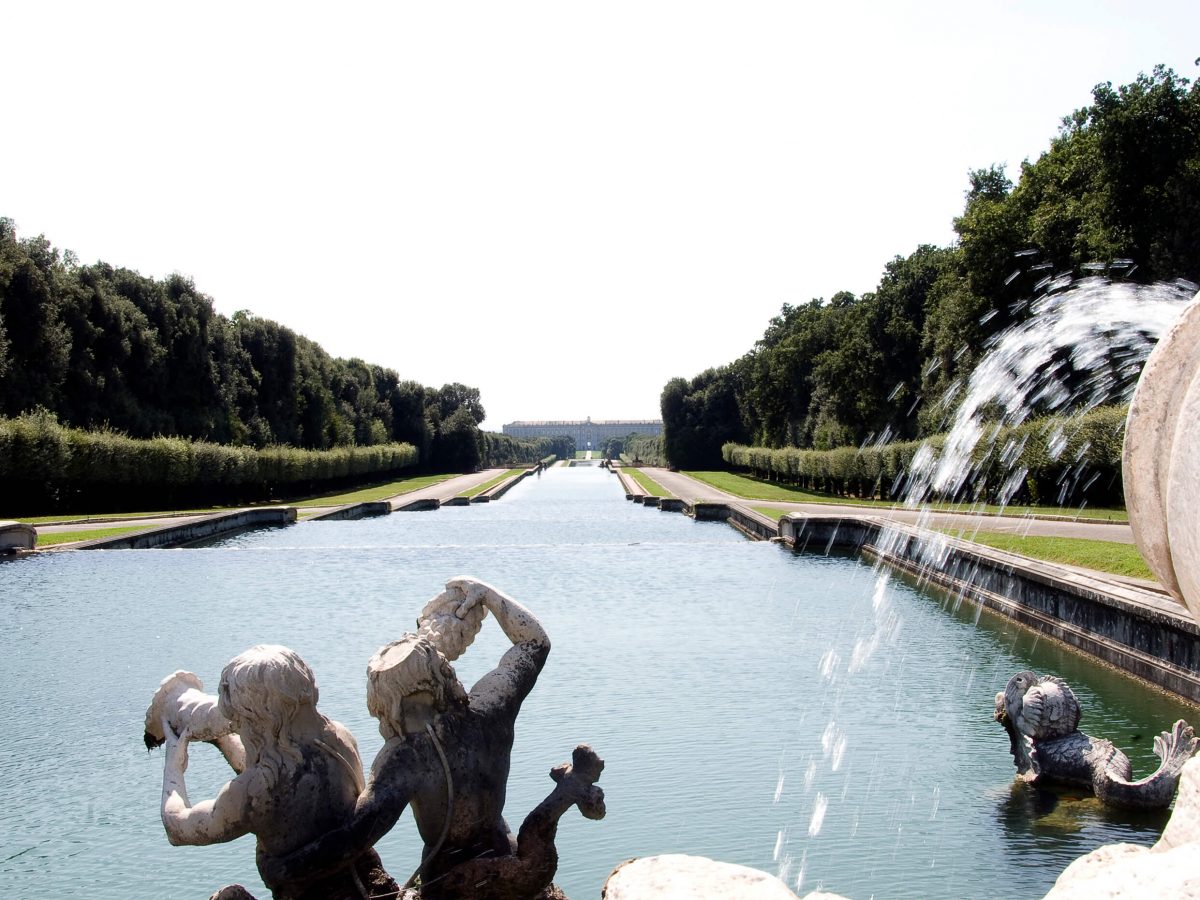The extraordinary monumental complex of Caserta was planned in the second half of the 18th century by the architect Luigi Vanvitelli, according to the wishes of Charles of Bourbon to rival Versailles and Madrid. It includes a sumptuous palace with a park, gardens and wooded area, as well as the Aqueduct Carolino and the industrial complex of San Leucio, built for the production of silk.
The Royal Palace is the centrepiece of the whole architectural composition and is located on a central axis which connects the entire complex. With its four courtyards and three atriums, the Royal Palace is a great example of monumental structure built to be a magnificent palace for the royal family and its court and, at the same time, an administrative centre inspired by the model of Escorial in Spain.
The park is the latest of the great European gardens inspired by the creations of Versailles and the 16th century models of villas in Rome and Tuscany. The English Garden is one of the greatest, oldest and most important picturesque gardens created in Europe.
The main part of the San Leucio estate is the ancient hunting Lodge of the Belvedere, converted by King Ferdinando IV of Bourbon into a silk mill to create an idealistic community of workers, who were guaranteed homes, schools, medical care and all services. It became the symbol of a model society based on the value of work and equality.
The Aqueduct Carolino, with its imposing viaduct “Ponti della Valle” is a stunning work of engineering and provides an extraordinary infrastructure not only serving the palace and the gardens but also the mills, the ironworks and the manufacturing industries located along its path.





